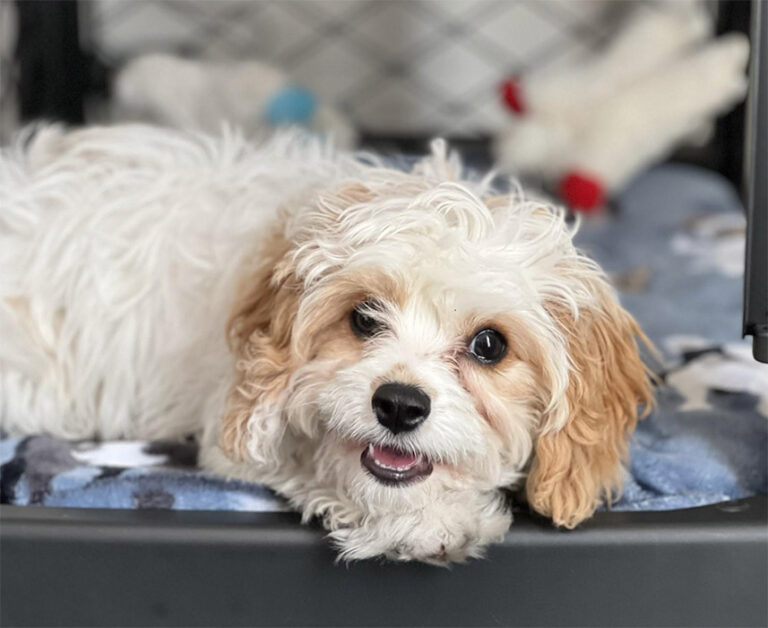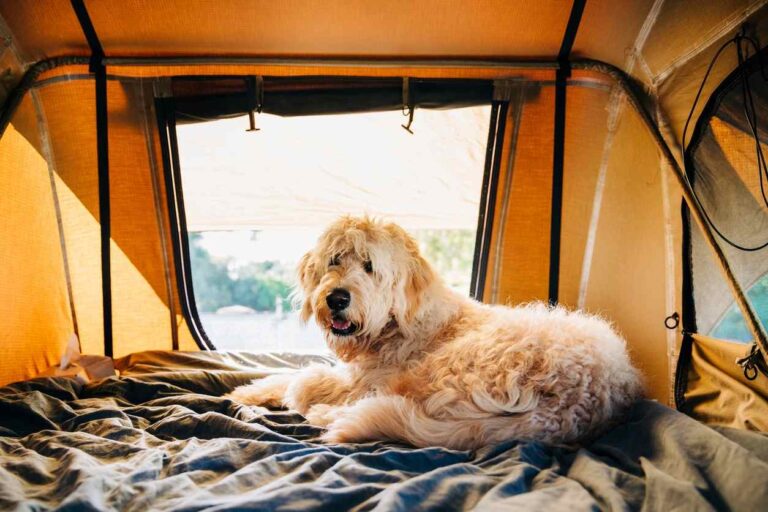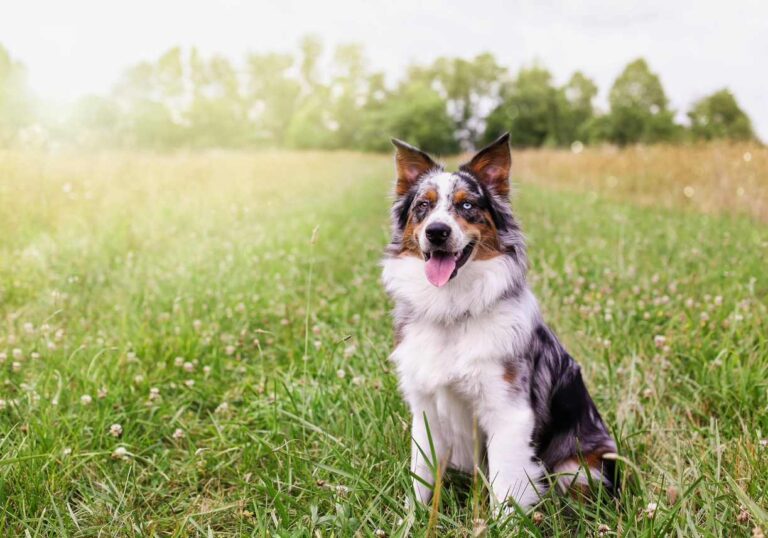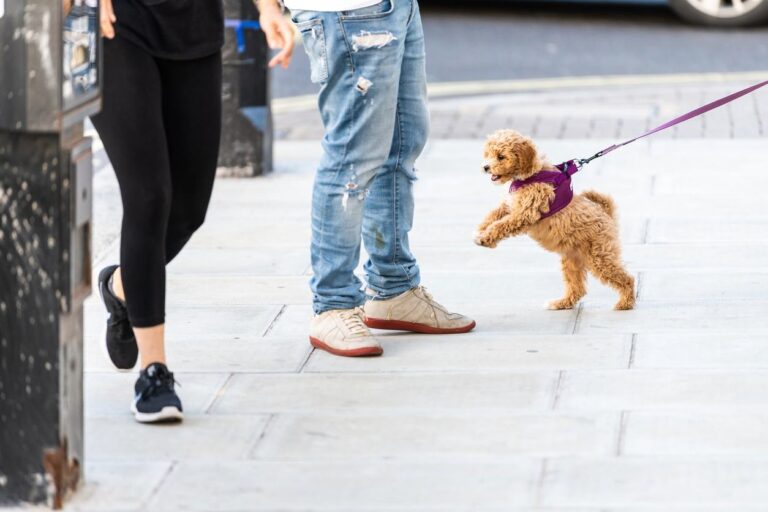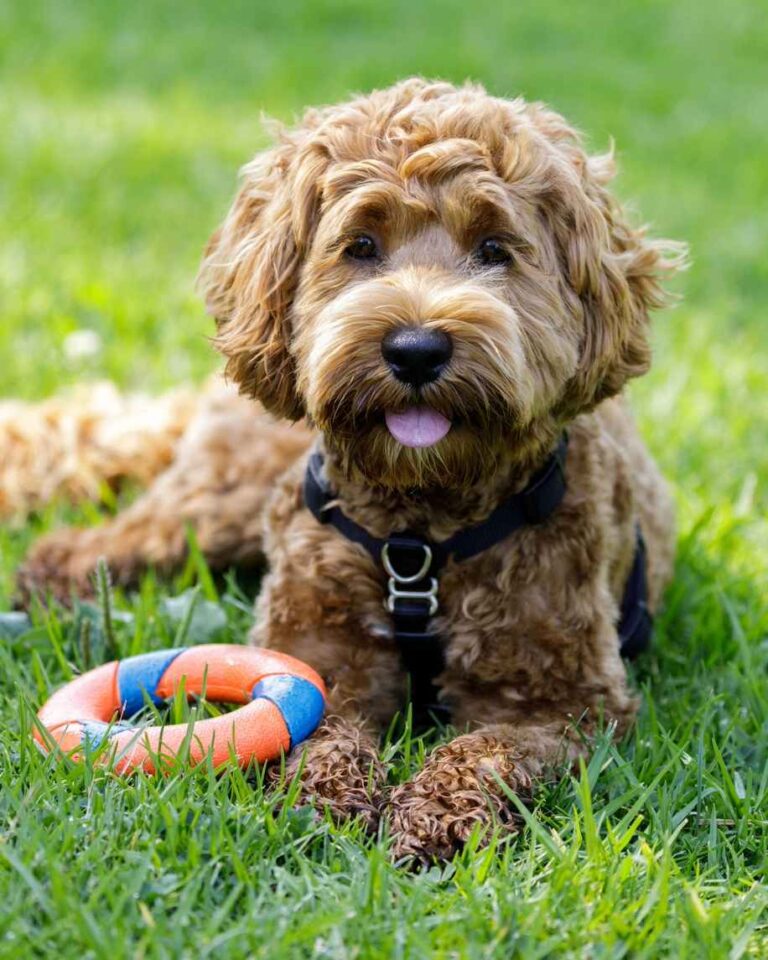Bringing a new puppy home is so exciting! That first day is full of puppy play and snuggles, and then all of the sudden the day flashes by and it’s time for bedtime. You have your crate ready to go, but that first night you place your puppy in the crate, they scream and whine for you. Do they need to potty? Are they scared? Is leaving them in there going to make them afraid of the kennel? Maybe they can sleep with me just for tonight, but will they develop an attachment that turns into anxiety? Help! We are here to walk you through attention barking versus separation anxiety, how they both play a factor into crate training, and how to implement measures that will help prevent separation anxiety as they grow into adulthood.Let’s first start with, What is separation anxiety?
Separation Anxiety
Separation anxiety typically presents itself as high levels of stress when crated or left alone. Low levels of stress start with excessive barking when they don’t have access to the owner, the dog engages in little to no “settling” down, and the dog tends to follow the owner from room to room and constantly lays on them or at their feet when they are home. High levels of stress can include behaviors such as excessive attempts to escape the kennel by pawing/biting, defecating and urinating, and excessive salivation. If they do escape the crate, the dog would typically immediately seek out access to areas where the owner may have exited the home from such as the back door, front door, or gate. In severe cases, those areas are often destroyed, dogs may break windows or chew through baseboards and drywall, dogs may self-injure themselves, and dogs may destroy areas that smell like the owner in an attempt to seek them out such as the laundry room.
Now what is attention barking? And how can I tell the difference? Many puppies will engage in attention seeking behaviors such as barking or whining towards their owners in an attempt to access that attention. Attention can be reinforced verbally such as “It’s okay Roxie! I’m right here” or physically, by petting or picking up the puppy.
Here’s the good news! True separation anxiety is typically seen and peaks in middle aged dogs. It is unlikely a puppy you just brought home is engaging in high levels of separation anxiety, and they are more likely to be engaging in attention seeking behaviors. It is pretty typical to expect that the first few nights your new puppy is home and in the kennel or out of sight from you, you will get some barking or crying and whining. Both separation anxiety and puppy attention barking in the kennel are reinforced by your attention, so we are going to teach you next how to 1) crate train your puppy and 2) work on preventative separation anxiety exercises and management strategies.
Before we jump into all of that, it is important to note that separation anxiety can be highly genetic, and if that is the case, there is a chance that those behaviors could onset earlier in life. There are certain breeds of dogs which are pre dispositioned to separation anxiety such as Weimaraners, Vizslas, German Shorthaired Pointers, Dalmations, Labrador Retrievers, Border Collies, Cavalier King Charles Spaniels, Jack Russell Terriers, Australian Shepherds, Cocker Spaniels, Havaneses, Bichon Frises, and Toy Poodles. Other breeds such as the Boxer may not do well crated, however this is more than likely due to the confinement itself versus attention seeking.
Lastly, separation anxiety can also be environmentally developed too. So you may want to be careful of over “spoiling” and “coddling” your puppy. In most of these cases we see that the dog lives with one single individual or the owners are empty nesters (no children), or the owners work from home and have had very limited time away from their puppy from a young age. If one of the above sounds like you, don’t fret! We are going to teach you how to help prevent separation anxiety as best you can.
Let’s start with crate training.
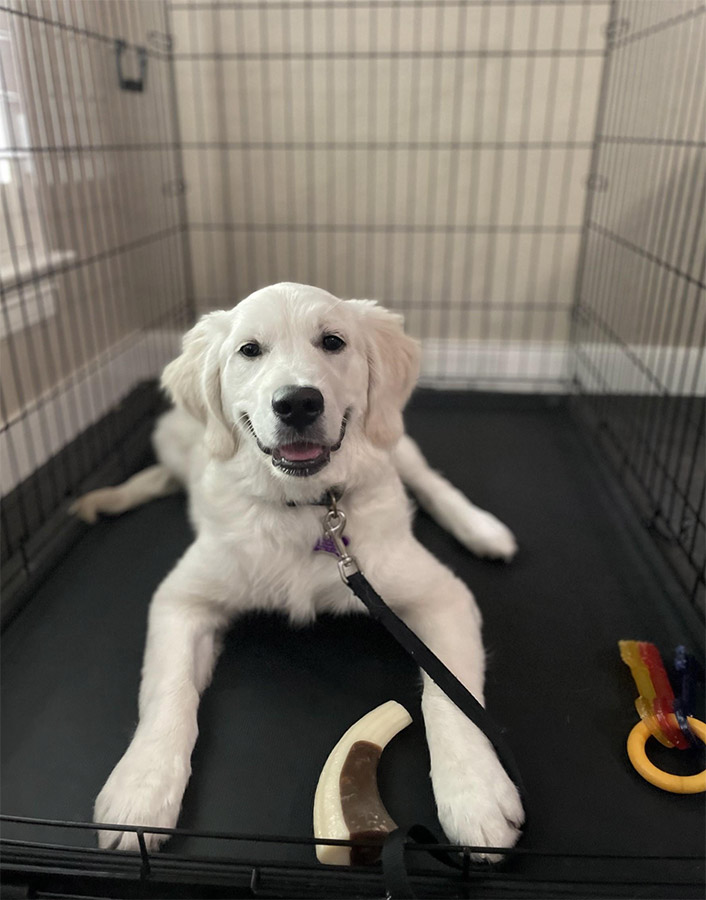
Crate Training
- Start with the crate door open and empty with no bed. Toss a treat into the crate and allow your puppy to walk freely into the crate. As soon as all four paws are in the crate say “good”.
- Allow them to freely come out if they want.
- Begin to reinforce when they pause inside the time they spend in the crate by tossing treats every 1-2 seconds as they hang out in the crate. Say “good” before you toss each treat.
- Slowly begin closing the crate door, say “good” when you close the door and toss a treat. Then open the door and allow them to come out again by saying “free”
- Continue to reinforce the amount of time spent staying in the crate by adding in walking away, saying “good” at your furthest point, and then coming back and tossing a treat.
- Work up to 1 minute to start, then 5, 10 minutes etc. and begin to go out of sight when the puppy is ready.
We also recommend feeding at least one of your puppy’s meals in the kennel as additional positive reinforcement of the kennel. Spread the kibble on the floor to encourage mental stimulation and to discourage eliminating in the kennel. You can check out our housebreaking blog here for more information on that. Now that you’ve got the crate training down, let’s talk about next steps in reducing the likelihood of separation anxiety
Exercises to Reduce the Likelihood of Separation Anxiety
When First Bringing Puppy Home
The first 1-3 nights that your puppy comes home, we recommend if possible, the crate should be either directly in your bed or right next to the bed in direct sight of you. If your puppy is struggling to settle, you can also additionally comfort your puppy by sticking your fingers through the gate on the crate so that they know you are present. Each night, the crate should get farther and farther away from you until the kennel is in the desired area. While they are young, we recommend keeping the kennel in the bedroom.
During the Day – Create space between puppy and you
Outside of housebreaking reasons, we generally recommend you periodically through the day have your puppy on a tether at least a few feet or so away from you. Sometimes, your puppy may howl or cry out for you, however, we tend to see in most cases if you ignore the barking, they will settle down after a bit and the barking becomes less and less over time. It is important when starting this early, not to deliver a correction and to avoid speaking to the dog at all during any periods of barking as this could be seen as “attention” from your puppy and may reinforce the barking. If your puppy is quiet, you can toss a treat to reinforce quiet and calm behavior. When your puppy is in your presence, we recommend limiting physical attention to when the puppy is sitting down, lying down, or chewing on an appropriate toy. Otherwise, limit your time of “free” physical petting to 5 seconds at a time.
While You Are Away
When you leave the home, you want to not make a big deal out of it. You should have your keys, purse, etc. in an easy to grab area. Have your puppy drag a leash 30 minutes to 1 hour prior to you leaving the house, and when you are ready to leave, you will not say anything and simply walk them into the kennel. If it’s around mealtime, have their meal ready to go and toss the meal into the kennel and immediately close the kennel door and leave the house. If it isn’t mealtime, you can toss a few treats or a kong with paste in it into the kennel instead. This feeding routine will help to develop a positive relationship with the kennel and a positive experience for when you leave the home.
If at any point in your puppy parent journey you are concerned that your puppy is starting to exhibit signs of separation anxiety, we have trainers and behavior consultants ready to speak with you and set up an independent session or two to assist you in an assessment and treatment plan recommendation. Contact us here!
